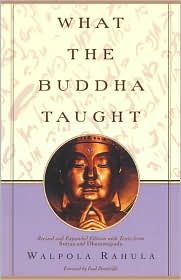Chapter 5 The Fourth Noble Truth : Magga: ‘The Path’
Chapter 5
The Fourth Noble Truth : Magga: ‘The Path’
- What is the Fourth Noble Truth?
- Why is it known as the Middle Path?
- What are the eight categories that constitutes the Noble Eightfold Path?
- How should the Path be followed and practices? Why?
- What are the three essentials of Buddhist training and discipline?
| .1 Right View |
1&2 Wisdom |
|
| 2. Right Intention | ||
| 3. Right Speech |
3,4&5 Ethical Conduct |
|
| 4. Right Action | ||
| 5. Right Livelihood | ||
| 6. Right Effort |
6,7&8 Mental Development |
|
| 7. Right Mindfulness | ||
| 8. Right Concentration |
Ethical Conduct / Sila
6.On what is Ethical Conduct built?
7. According to Buddhism what are the two qualities a man should develop equally to be perfect?
8. What is compassion?
9. What is wisdom?
10. What are the three factors of the Noble Eightfold Path that fall under Ethical Conduct?
11. What is the practice of Right Speech?
12. What is the practice of Right Action?
13. What is the practice of Right Livelihood?
14. No spiritual development is possible without the moral basis of Ethical Conduct? TRUE or FALSE
Mental Dicipline / Samadhi
15. On what factors of the Noble Eightfold Path is Mental Discipline built?
16. What is the practice of Right Effort?
17. What is the practice of Right Mindfulness?
Suttas on Meditation mentioned in book: MN118 Anapanasati-sutta( Breathing Meditation), Satipatthana-sutta (Setting-up Mindfulness)
18. What is the practice of Right Concentration?
Right concentration leads to the four stages of Dhyanas ( Jhanas) .
Dhyana- ‘trance’ , recueillement, a state of mind acheuved through higher meditation.
Supplemental reading : Very Detailed information on the Four Dhyanas (Jhanas)
19. Explain the first stage of Dhyana.
20. Explain the second stage of Dhyana.
21. Explain the third stage of Dhyana.
22. Explain the fourth stage of Dhyana.
Wisdom / Panna
23. On what two factors of the Noble Eightfold Path is Wisdom developed?
24. What is the practice of Right Thought ( Right Intention ) ?
25. What is the practice of Right Understanding ( Right View)?
Supplemental reading: Ven. Thich Nhat Hanh on RIGHT VIEW , more on Right View ,The Noble Eightfold Path
26. What are the two sorts of understanding according to Buddhism?
27. What are the four functions with regard to the Four Noble Truths we need to perform?
Supplemental reading on The Four Noble Truths: Ven. Bhikkhu Bodhi on The Four Noble Truths,

